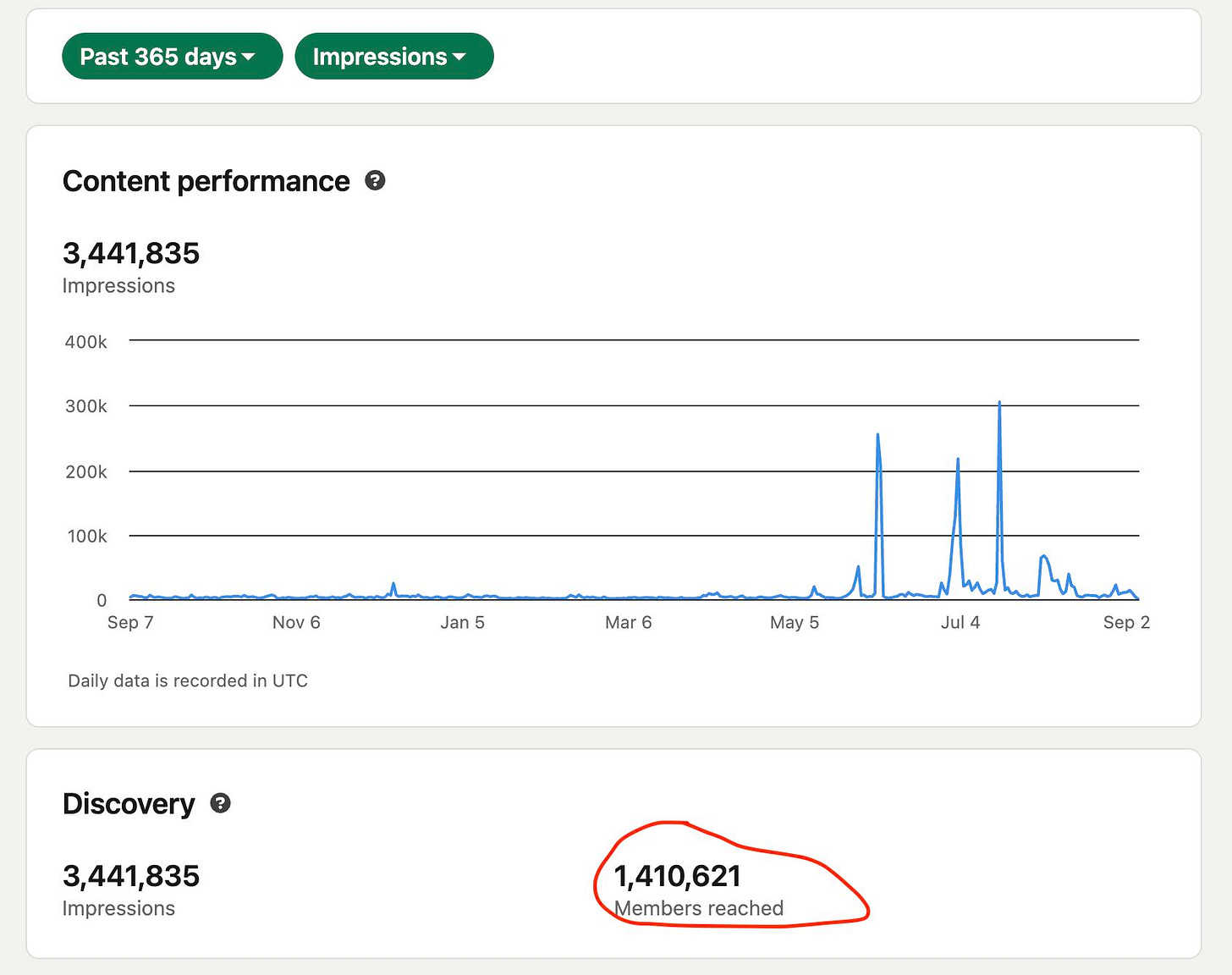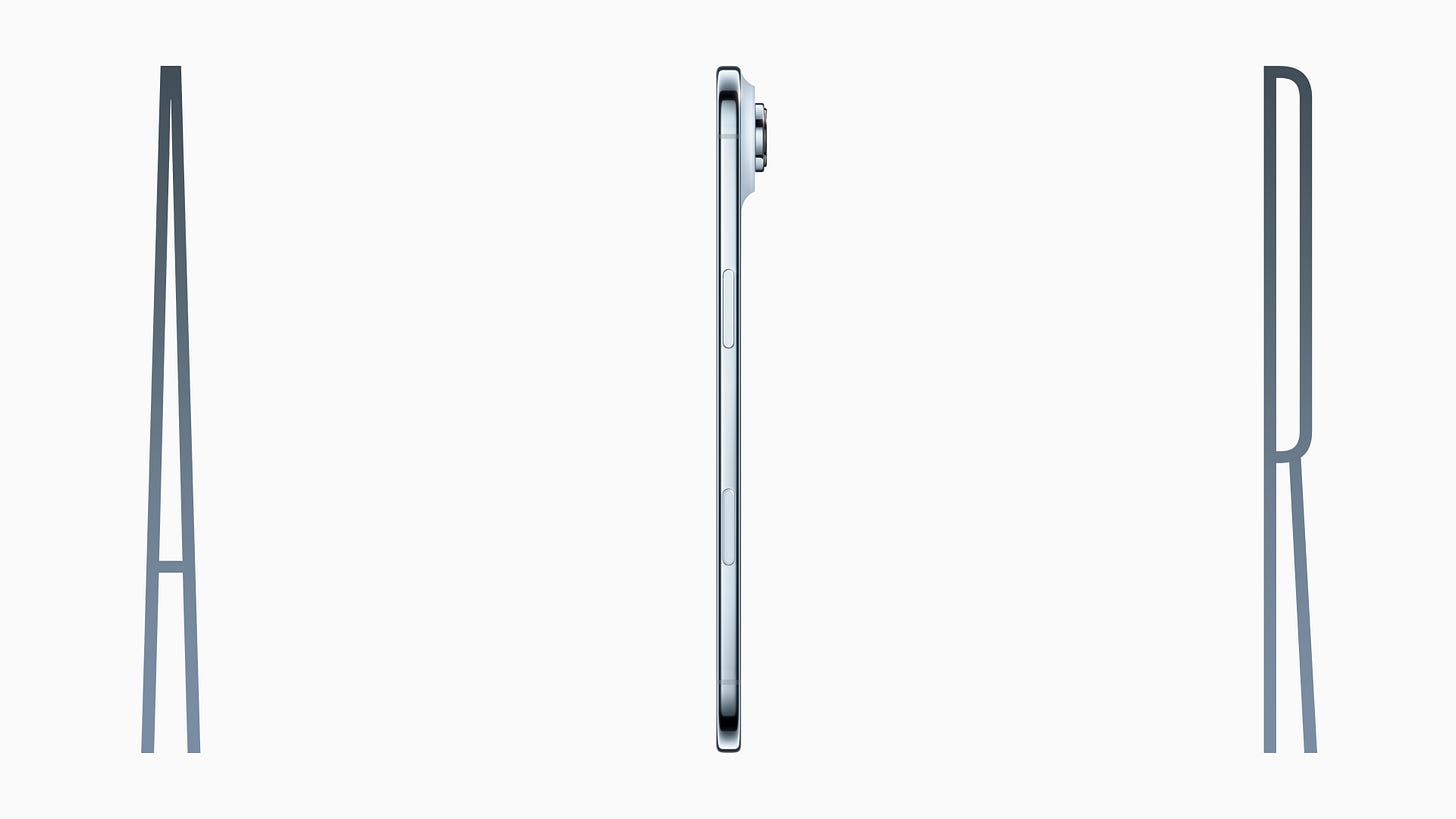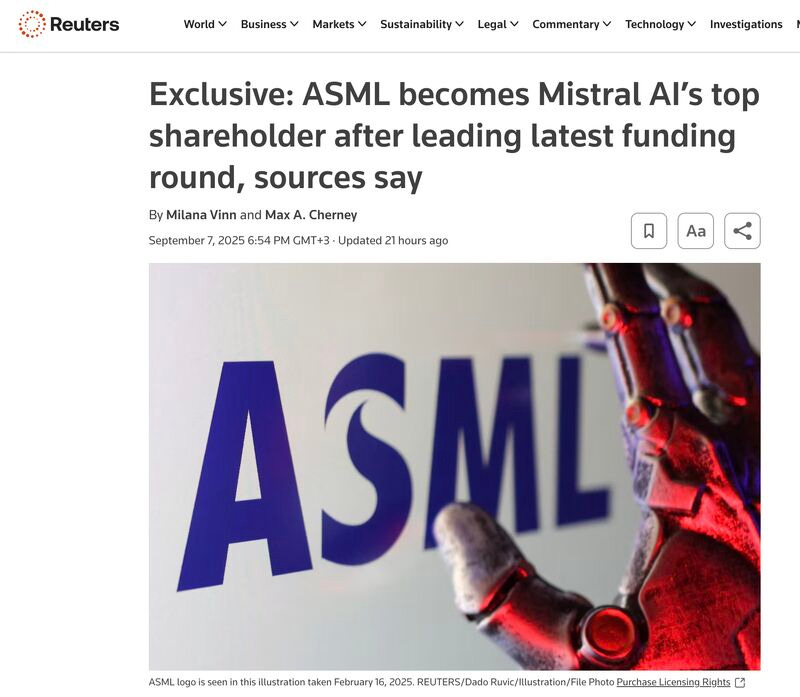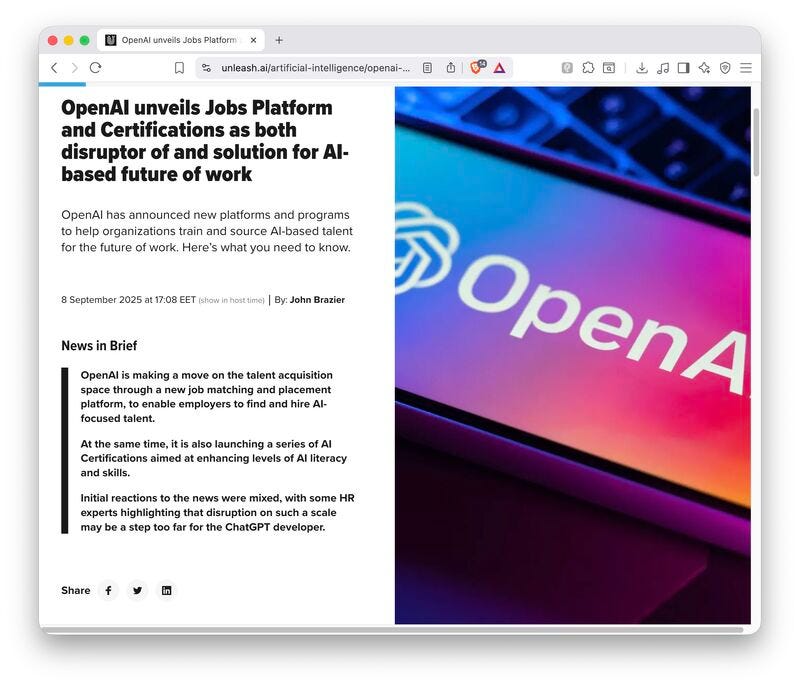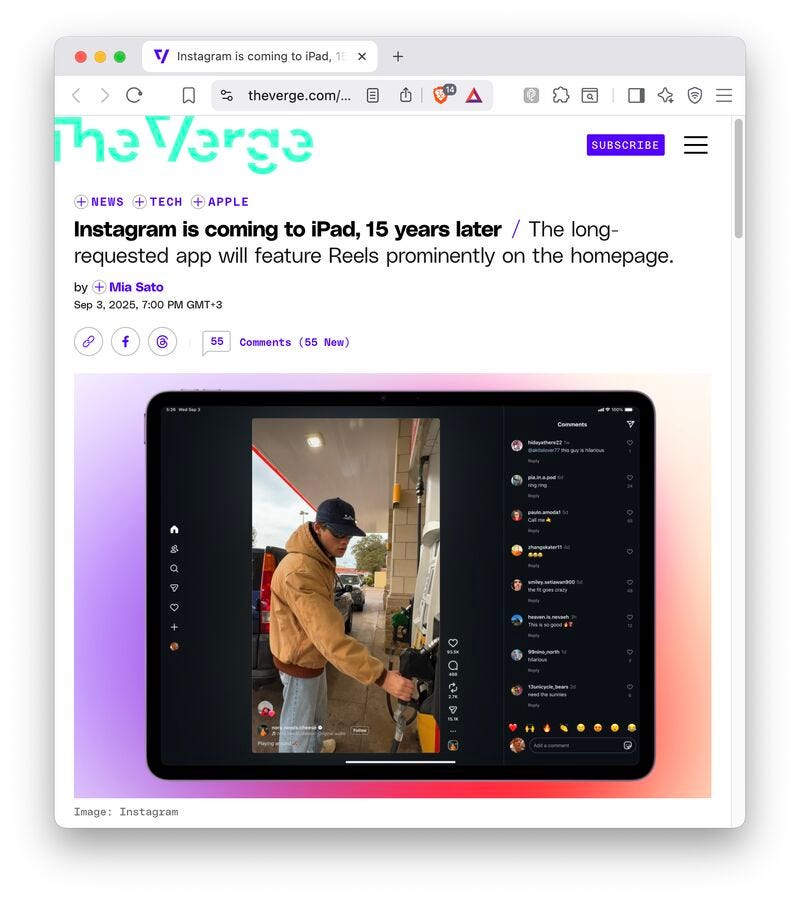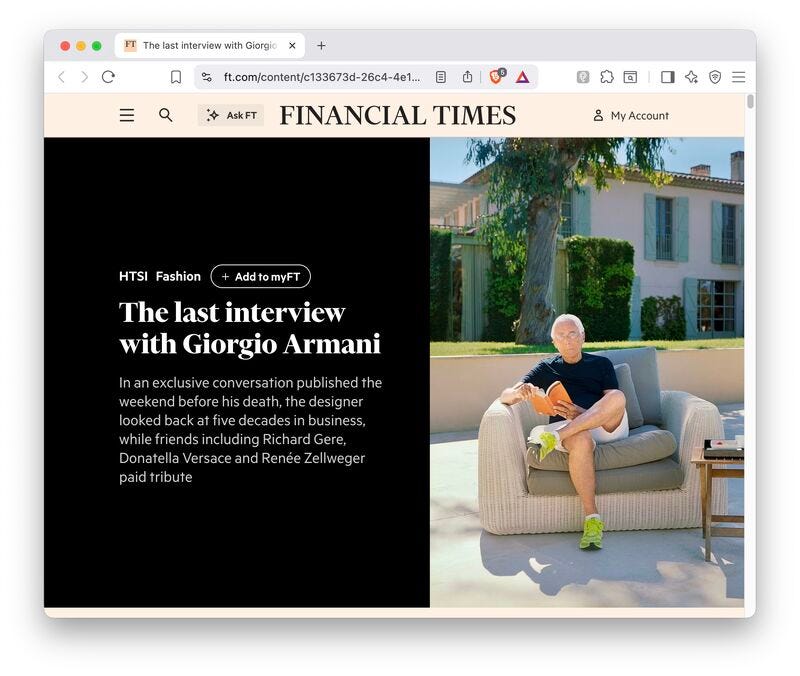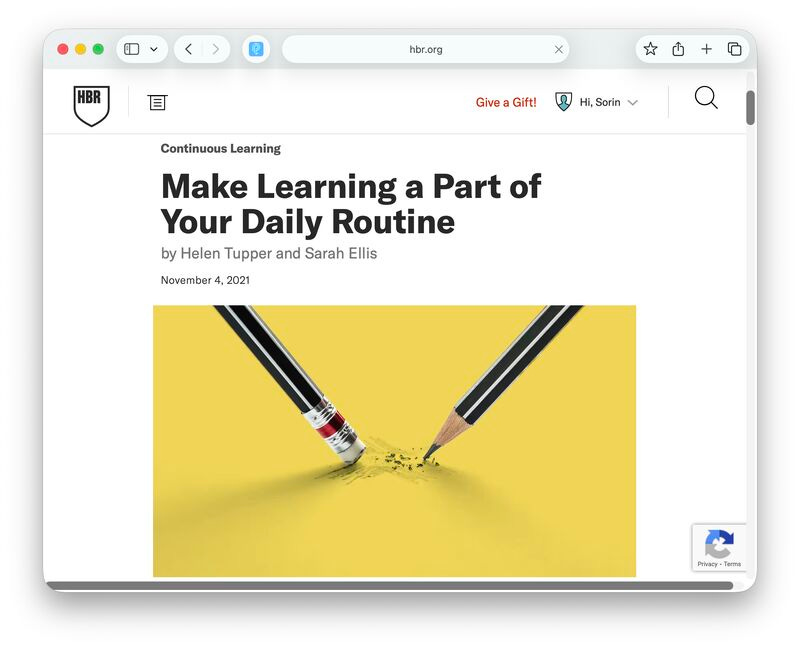(#143) Is Apple transforming in an utility company? 🤔
All in: $1 trillion compensation package from Tesla to Elon
Thank you for being one of the +4,500 minds reading this newsletter
Here is what you’ll find in this edition:
Apple's boring decade
All in: $1 trillion compensation package from Tesla to Elon
Is the EU investing in an AI alternative?
Roblox’s new strategy: becoming a TikTok competitor…sort of
Why Instagram has an iPad app
…and more 👇
Onto the update:
A personal update…
Over the past 12 months, my ideas reached 1.4 million unique people on LinkedIn. Which is both humbling and also a little absurd because it turns out the internet is still one of the few places where you can publish a thought over morning coffee and, by lunchtime, find yourself in a debate with a CEO in Berlin, a student in Lagos, or a policymaker in Washington.
What I’ve learned is that the real value is in the feedback loop. You share a perspective, someone challenges it, someone else reframes it, and pretty soon you’ve stress-tested an idea more rigorously than in any boardroom. Sometimes the disagreements sting, but that’s the point. A sharp counterpoint is a gift. It forces clarity, and clarity is rare.
The temptation online is to perform (ie. to signal how smart you are, how right you are). But the posts that really work aren’t about winning arguments; they’re about making space for better ones. Sharing ideas here is less like broadcasting and more like open-sourcing your thinking.
So thank you to everyone who read, liked, argued, or DM’d me this year. If 1.4 million people saw these posts, then 1.4 million chances existed to make the ideas sharper. Keep challenging, keep questioning, keep engaging. The work is better when we do it together.
Apple's boring decade
Apple’s fall event is still the Super Bowl of consumer tech, but now it feels more like watching a dynasty team run the ball up the middle. The iPhone 17 Pro is sturdier, with Ceramic Shield 2 and a unibody aluminum frame. The overheating problems of the titanium 15 Pro are fixed with a vapor chamber. Battery life is better. Cameras are sharper, with 48-megapixel sensors across the board and a Center Stage selfie camera that finally makes landscape selfies tolerable. It’s all good. It’s all incremental. And that’s the paradox: when you’ve already perfected the form factor (ie. a glass-and-metal slab that fits in your pocket) “new” mostly means “better.”
The iPhone Air is the exception, Apple’s big swing at reinvention. It’s thinner and lighter than anything before it, so thin you almost wonder if it breaks the first time you sit down with it in your pocket. But the compromises are obvious: weaker battery, fewer cameras, and a $99 battery attachment that is “optional” in the same way a charger is “optional”. It’s a marvel of engineering, but it’s also a proof of concept, a future you can look at but maybe shouldn’t buy yet. A triumph and a gimmick at the same time.
Meanwhile, Apple Watch and AirPods got modest but meaningful updates: hypertension detection that works across older models, satellite texting for hikers, and AirPods Pro 3 with heart-rate monitoring and a better fit. These are smart, thoughtful improvements that lock people deeper into the ecosystem. But they’re not going to make teenagers line up outside Apple stores or send X (tTwitter) into a frenzy. They’re utilities, not cultural moments.
And that’s really the shift. Apple is still a juggernaut, still running a business model that marries hardware and software better than anyone. The company is printing money from services, App Store fees, and Google’s $20 billion a year just to stay the iPhone’s default search engine. But the cost of those easy profits is visible. Apple didn’t invest in the messy stuff (data infrastructure, search, or AI) and now finds itself playing catch-up. When people talk about “the future”, they’re talking about Musk’s robotaxis, humanoid robots, or rockets, not Apple’s vapor chamber cooling system (!)
The irony is that Apple is still innovating internally. The iPhone Air’s engineering is extraordinary. The iPhone 17 Pro is probably the best smartphone ever made. But the vibe has changed. A decade ago, Apple events were the future. Now they’re the present, iterated. That’s not bad, but it’s arguably the most enviable corporate position on Earth. But it means Apple has slipped from being the company you follow to see what’s next, to the company you buy from because you know exactly what you’re getting, ie. the best version of the same thing you already own.
So yes, Apple is still changing the world. Just not in the way that captures imagination anymore. They’re the mature incumbent, selling a better kind of a utility, while the crazy moonshot stuff (EVs, robots, AI) is happening somewhere else. The danger is that Apple will lose relevance in the cultural imagination. And for a company built on making people want to be part of its story, that’s the real cost of incrementalism. LINK
All in: $1 trillion compensation package from Tesla to Elon
Tesla’s board just offered Elon Musk what is effectively a moonshot lottery ticket: a $1 trillion pay package if he can grow Tesla’s market cap to $8.5 trillion and scale robotaxis, humanoid robots, and vehicle output to science-fiction levels. On paper, it’s a 12-tranche performance plan with milestones like "deliver 1 million Optimus robots" and "20 million Teslas a year". In practice, it’s a recognition that Tesla without Musk is just another EV company with slowing deliveries. The package is more about insurance (ie. pay him now so he doesn’t walk).
The optics are, of course, ridiculous. Musk is already the world’s richest man, already sold stock to buy Twitter/X, already pulled Tesla into political crossfire, and already had his last pay package voided by Delaware courts for being basically written by his buddies. So the board shifted to Texas, rewrote bylaws to make lawsuits harder, and came back with a plan worth 20x the GDP of Luxembourg. The message to shareholders is simple: Musk runs the show, the courts can’t stop him, and Tesla is betting its future not on cars but on Musk’s narrative gravity.
Markets, naturally, rewarded the absurdity. Tesla stock rose 3% after the filing, because even if Musk only hits half the targets, you still get a company that’s reinvented itself from a carmaker into an AI-and-robotics conglomerate. Investors aren’t buying the probability of 1 million humanoid robots; they’re buying the optionality that Musk might just pull it off. And if he doesn’t? Well, at least you were along for the ride. It’s the same logic that justified his $50 billion package in 2018, except this time the numbers are cartoonishly bigger.
The board does acknowledge Musk’s "competing priorities" (ie. SpaceX, xAI, Neuralink, politics, feuding with Trump) but concludes that retaining him is existential (which truly is!). In fact, Musk himself reportedly threatened to leave Tesla if he didn’t get at least 25% voting control. So the governance theory here is basically hostage economics: give him the stake or watch him walk. For a company that just saw EV deliveries fall 13% in the first half of the year, that’s not exactly reassuring.
So yes, a trillion-dollar pay package sounds insane. But the insanity is kind of the point. Tesla’s valuation has always been about narrative, not fundamentals. A car company is worth $1 trillion because investors believe it’s also a robotaxi company, an AI lab, an energy provider, and now a humanoid robot factory. The board is leaning into that delusion now. If Tesla is going to be valued like science fiction, it needs its chief storyteller paid like a supervillain.
But again, there is a saying across America: "Don't bet against Elon". We shall see...LINK
Is the EU investing in an AI alternative?
ASML just dropped €1.3 billion into Mistral AI, instantly making itself the top shareholder and Mistral the most valuable AI company in Europe. On paper, this looks like industrial synergy: ASML builds the $180 million EUV machines that make the chips, Mistral builds the models that run on them, and together they can optimize lithography with AI while selling Europe a sovereignty story. In reality, it’s also politics. Brussels keeps talking about "strategic autonomy", but without chips and models, you’re just debating. ASML is basically saying: fine, we’ll bankroll the models too.
The implication is that Europe doesn’t trust its startups to scale without an industrial adult in the room. The US AI companies raise billions from venture capital and cloud hyperscalers. In Europe, the cloud hyperscaler is ASML, as it’s the only player big enough to write a check of this size, together with SAP.
That’s both good and bad. Good because it ties two crown jewels together, bad because it highlights how shallow the capital markets are. The bet here is that even if Europe can’t out-innovate OpenAI or Google, it can out-integrate: bundle hardware + AI, make it sovereign, and hope nobody notices that the chips are still made in Taiwan. LINK
AI jobs website from OpenAI
OpenAI is now in the jobs business, which is both wildly ambitious and a little ironic. On one hand, they’re launching a Jobs Platform to match AI-savvy workers with companies, plus a stack of Certifications to prove you actually know what you’re doing with prompts. It’s framed as empowerment ("expanding economic opportunity with AI") but it’s also vertical integration of the entire labor pipeline. They build the tech, they train you to use it, and now they’ll place you in a job for Walmart or Accenture. The future of work, apparently, is one giant OpenAI reseller program.
The implications are fascinating and a bit cynical. Yes, millions will learn new skills, but the bigger play is that OpenAI is inserting itself as a gatekeeper of "AI fluency". If every resume soon needs an OpenAI certification badge, that’s less about worker empowerment and more about vendor lock-in. And the skeptics are right to worry about "application tourism".
Tech firms often dabble in HR platforms before realizing hiring markets are messy, low-margin, and hard to scale. But if OpenAI pulls this off, they’ll be regulating them, privately, by deciding what counts as AI literacy. LINK
Roblox’s new strategy: becoming a TikTok competitor…sort of
Roblox just announced "Roblox Moments", basically a TikTok inside Roblox, because what kids really need after 6 hours of grinding obbys is 30-second clips of other kids grinding obbys. You can trim, add music, throw on emojis, and then scroll endlessly through a feed of gameplay that looks exactly like your own gameplay but slightly worse.
It’s genius in the most cynical way. Roblox figured out that its core product (children doing free labor) wasn’t sticky enough, so now it’s bolting on the most addictive UI in the world to keep them scrolling between in-app purchases. This looks like a casino for under-16s that just installed more slot machines. LINK
Why Instagram has an iPad app
Instagram finally launched an iPad app , 15 years after people first asked for it, and of course, it opens directly to Reels. Meta spent a decade telling us tablets didn’t matter because they don’t create content (rule of thumb: 1% of users create, 9% comment, 90% just lurk). On phones, you can trick some of the 9% into sliding into the 1% (e.g. snap a photo, post a Story, generate a little dopamine loop). On tablets? People just watch. Which, if you’re pivoting from "social network" to "ad-supported middlebrow TV", is suddenly not a bug but a feature.
The deeper lesson is about how networks evolve. At first you need creators, so you optimize for creation. Later, once creation is abundant, the real money is in passive consumption at scale. That’s why Instagram’s iPad app doesn’t start with your friends’ vacation photos, but it starts with TikTok clones. It’s not "connecting people", it’s free distribution for video ads, delivered on a bigger screen where the 90% can watch more comfortably.
The 1-9-90 rule is ruthless math. You only need a tiny sliver of people to keep producing, as long as the rest of us keep scrolling. And so Instagram on iPad is less about finally listening to users, and more about finally admitting what Instagram really is: not a photo-sharing app, but a television network with better targeting. LINK
RIP, Georgio Armani!
His last interview is exactly what you’d expect from a man who built an empire out of gray jackets: total control, total focus, and a kind of stubborn elegance that turned into billions of euros. He admitted his "greatest weakness" was that he had to oversee everything (ie. fittings, makeup, even phoning staff to yell about a show starting late). But of course, that weakness is also the reason Armani is still Armani: fifty years of never chasing trends, just hammering the same vision of understated style until it became timeless. In fashion, Armani made a fortune by shorting volatility.
And he knew it. "If what I created 50 years ago is still appreciated by an audience that wasn’t even born at the time, this is the ultimate reward", he said. Armani played generational compounding with style. Which is why you can still walk into a vintage store today, buy a deconstructed Armani suit from 1983, and look like you belong on the cover of GQ.
He also turned the logo into a lifestyle hedge fund: hotels, chocolates, flowers, film costumes. Owning an Armani was like buying entry into a world where everything matched.
The one crack in the armor? He admitted he worked too much, missed time with family, didn’t "live" enough. Which is funny, because every obituary will now write that Giorgio Armani lived for fashion. The regret was personal, but the output was permanent. It’s the classic founder’s trade. Immortality in the brand, mortality everywhere else.
Harvard Business Review: “Make Learning a Part of Your Daily Routine”
The HBR piece argues that in today’s "squiggly" careers, where learning is THE job (pls, re-read that line). That sounds inspiring, but it’s also a little bleak: congratulations, the homework never ends. The old deal was that you learned a trade, got good at it, and coasted for a few decades. The new deal is that your trade will vanish every five years (or less), and your actual skill is proving you can Google new frameworks fast enough to keep your boss convinced you’re "adaptable".
The article prescribes coffee chats, side experiments, skill swaps, and even "unlearning" old habits (good luck with that 😅), which is great advice but also corporate self-help for the fact that companies offloaded training onto employees years ago. Microsoft can wax poetic about "learn-it-alls" beating "know-it-alls", but the fine print is that you’re doing the learning on your own time, in between Teams calls.
Your career resilience is about how fast you can shed it and start over. Which is maybe liberating, maybe exhausting, but definitely the new normal. LINK




